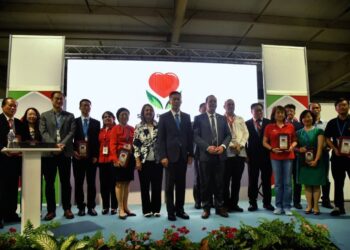Amid the daily blackout and the depths of darkness, a group of neighbors discovered a “giant firefly” in the capital’s municipality of Marianao. Adding to the surprise of the discovery was the fact that they could power cell phones and rechargeable lamps with the “insect’s” energy. A joke?
More than a joke, the tirade is a metaphor for Carlos Cancell’s home, equipped with a solar panel and the rest of the battery-powered energy storage system. A complete novelty in his neighborhood, which lives with one foot in the 20th century and the other in the 21st, but with excursions into the 19th century, via horse-drawn carts, lit candles, and improvised charcoal stoves, all of which is neither metaphorical nor a joke.
A couple of months after the panels began operating, inspectors from the Electricity Conglomerate (UNE) knocked on his door with unfriendly expressions. They wanted to know what and how Carlos had managed to drastically cut his consumption, suspecting some kind of trick. Slowly, the customer showed his equipment to the inspectors. “Ah,” they responded reluctantly upon learning the cause of the precipitous drop in spending.
With his pair of panels, Cancell has 24/7 power for his refrigerator, lights, fans, television, stereo, etc.
Considered by some to be a “firefly” with 4.5 kW per day, during the days when the National Electric Power System has collapsed, many neighbors have benefited from the solidarity services provided by the “plant” of this sales representative of Captura Aid and Trade, a Norwegian-funded MSME that represents the powerful Chinese photovoltaic technology manufacturer Bluesun in Cuba.
The company produces high-efficiency monocrystalline and polycrystalline solar panels, inverters, lithium, AGM and gel batteries, installation systems, and MPPT and PWM charge controllers, with power ranges from 5W to more than 650W per panel.
“In my neighborhood, when there are blackouts, my house is the only one with electricity. Neighbors come over at night, and I lend them an extension cord so they can plug in fans and sleep better,” Cancell Gómez told OnCuba during an after-dinner conversation at the residence of the Norwegian ambassador to Cuba, John Petter Opdahl.
From a technical standpoint, what type of solar collectors are you using?
The systems we are installing are monocrystalline solar panels. We also have bifacial panels for large installations, which generate energy from both sides, increasing reliability in electricity generation.
Are both types of panels made of silicon?
Yes, both. Silicon is the material with the highest performance.
What are the greatest challenges in Cuba for expanding this type of technology?
In our case, the main challenges are in the residential sector. Cubans, for the most part, use the national currency, but the system must be paid in dollars, and payment is made abroad through bank transactions. We work directly with a factory in China and pay in dollars. We are working to be able to sell in national currency in the future, because there is a sector of the population with great interest that only has access to the national currency.
In which areas of Cuba is there the greatest need for these systems?
In the central-eastern region, where blackouts can last more than 20 hours. Producers such as bakers and food processors need these systems because, without power, their raw materials spoil.
Who are the main clients currently?
Mainly the private sector, MSMEs, and self-employed workers in the capital. By law, they have up to five years to set up their own source of electricity. New businesses must have their own independent electrical system installed to be approved.
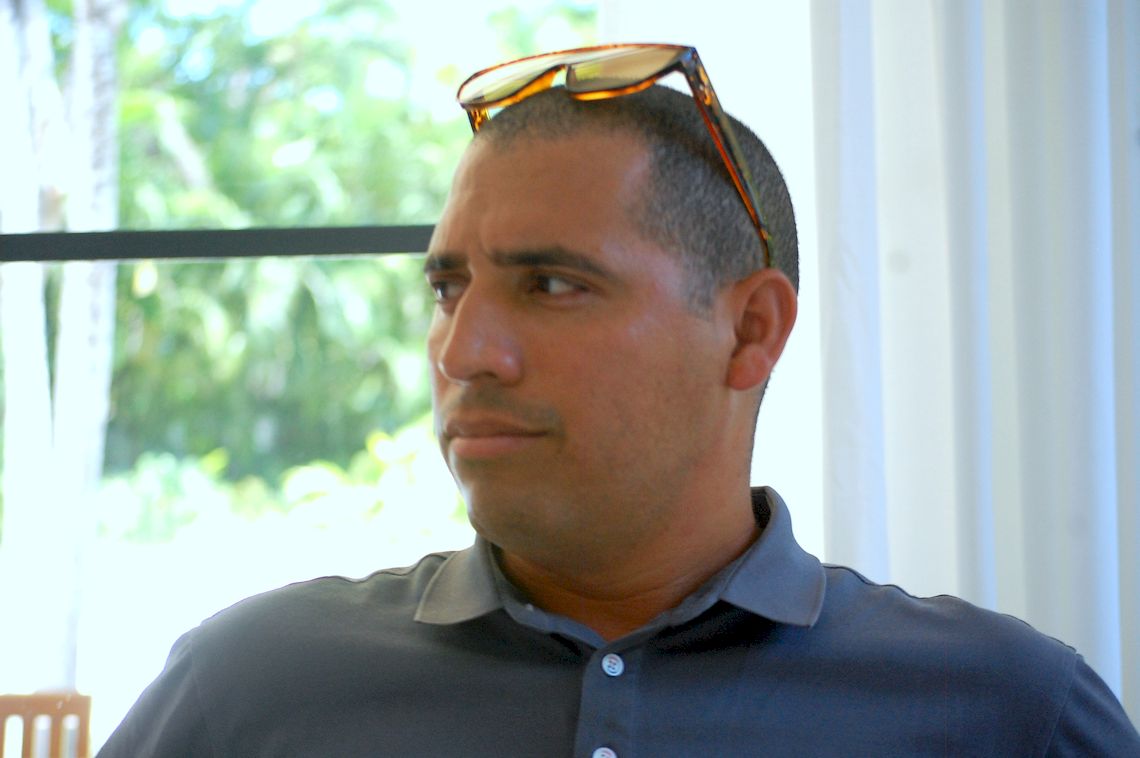
The contract and its archipelago of difficulties
These days, Cancell Gómez’s attention is focused on negotiations with a market in Miramar, located at 13th and 42nd Streets. There, the company plans to install a 100-kW solar system, an essential solution for such a large market that, to function, needs an electrical source independent of the national grid, so vulnerable to the island’s fluctuations.
The implementation of these programs, however, is no easy task in Cuba. Carlos knows that, once the contract is signed, the race begins to secure construction materials: cement, sand, and stone — resources that are always in short supply and subject to shortages. In fact, they are the priority. If the supplies aren’t resolved, the contract is frozen until then.
The systems they install come from China, arrive by sea, and the assembly process takes longer than expected, in part due to the wait required for the mixture to set and the bases for the solar panels to be prepared.
Climate concerns are not a minor factor in their calculations. The systems they sell, he assures, are designed to withstand Category 1 hurricanes. No less than in a region like the Caribbean that produces Category 4 and 5 monsters every hurricane season. If the client has a power plant, he can use it to power the solar system’s battery during a storm, thus maintaining the flow of energy when it’s most needed.
Versatility is another of Captura’s trump cards. The batteries can be recharged in three ways: through the grid, sunlight, or a power plant.
The solar panels have a lifespan of around 30 years, although their efficiency can decrease by up to 23% during that time. The inverter, meanwhile, lasts 10 years, and the battery, the most expensive component, can last between 3 and 10 years, depending on its type.
For Carlos, there is no doubt about the quality of the Chinese technology they use.
Founded in 2013 in Hefei, BlueSun Solar is among the top five manufacturers in the world, present in 190 countries, and with extensive experience in Africa, where they have installed national electricity systems.
Captura’s future success on the island will also depend on how it adapts to the financial possibilities of the domestic market, amid an accelerated dollarization process as a state policy to capture fresh foreign currency based on goods and services in a society where approximately 26% of households receive remittances.
According to estimates by the Inter-American Dialogue cited by CNN in Spanish, these remittances are mostly sent from the United States, which accounts for approximately 92% of remittances, often arriving through “mules” (financial emissaries).
According to Cancell Gómez, Captura is creating the economic conditions to offer solar systems to Cuban families in local currency, perhaps by 2026 or 2027, aware of the needs of a significant portion of the population.
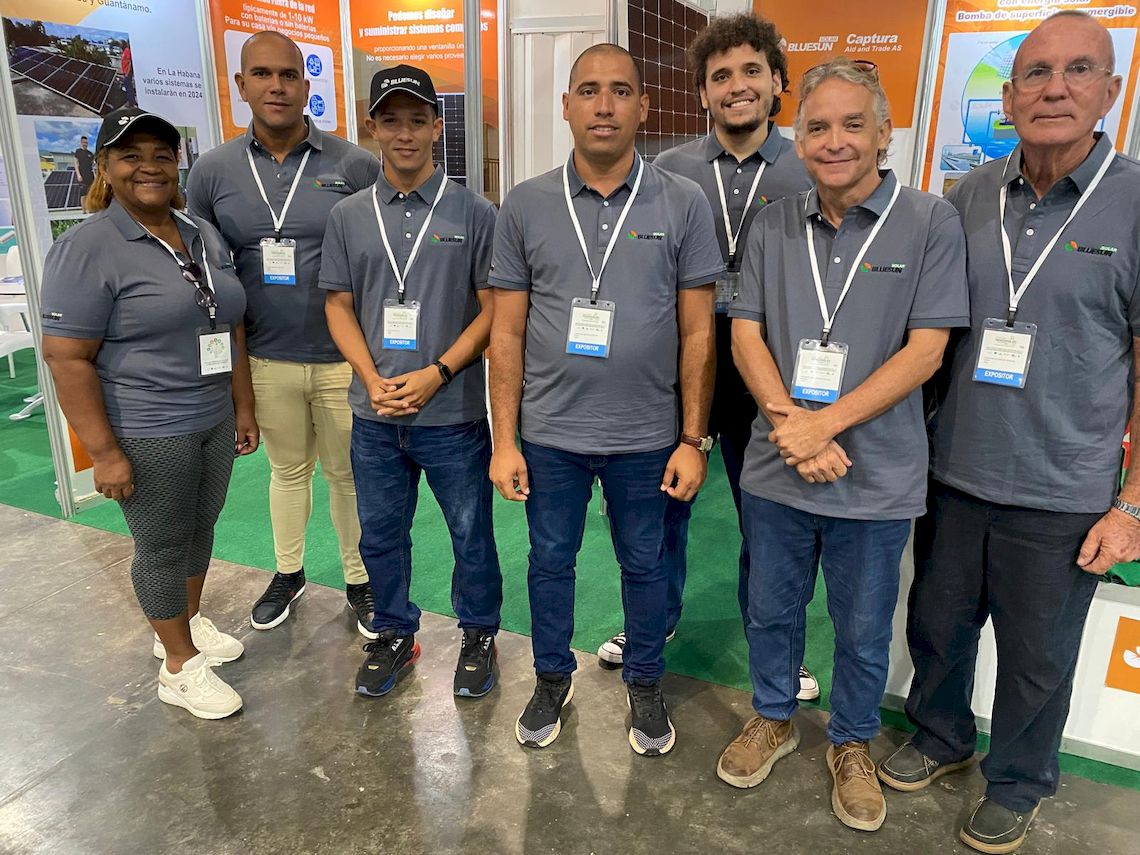
Regarding the national electricity system, the expert remains skeptical. He believes that recovery depends on international credit lines that don’t exist today and on an investment of billions of dollars.
Access to hydrocarbons will continue to be problematic: Cuban oil, with its high sulfur content, eats away at thermoelectric plants, and the country currently relies on imported crude.
The blackouts, he explains, are a direct consequence of technological decline, but also of the fuel shortage. That’s why the government is pushing the transition to solar energy at all costs.
Is there a risk of theft of the solar panels?
It’s possible someone could try to steal a panel, but it’s not easy. The system requires a special key to disassemble it and a specific connection. If a cable is carelessly cut, the panel is rendered unusable.
Let’s assume the criminals are sophisticated. Is there a market for stolen panels?
So far, no thefts have been reported, but there could be in the future. However, the technical difficulty of disassembling and reusing them is a barrier in itself.
Hope on the rooftops
On the rooftops of Havana and in the countryside of the provinces, a new symbol of hope and modernity has begun to emerge: solar panels.
As Cuba’s energy crisis deepens, marked by recurring national blackouts and an electrical infrastructure on the verge of collapse, solar energy is emerging as the most viable alternative for thousands of Cubans and businesses seeking to mitigate the daily uncertainty and paralysis.
The country has suffered three national blackouts in the last seven months, in addition to outages that have lasted more than 24 hours and reached up to 40 uninterrupted hours. Meanwhile, the government has imposed a decree requiring state-owned and private companies to generate 50% of their electricity consumption by 2028. This measure, although drastic, has accelerated the transition to renewable sources, especially photovoltaic energy.
“It’s been a boom,” says Henry Fernández, commercial director of Captura. “Restaurants, supermarkets, embassies, and even machinery manufacturers are adopting this technology,” he adds.
These days, authorities acknowledge that demand during May has exceeded 3,400 MW during peak hours, generating deficits of between 1,000 and 1,800 MW and causing ongoing disruptions to the electricity supply throughout the country.
“Demand has grown exponentially. Companies that previously managed one project a month now manage up to seven, even without advertising,” adds the economist.
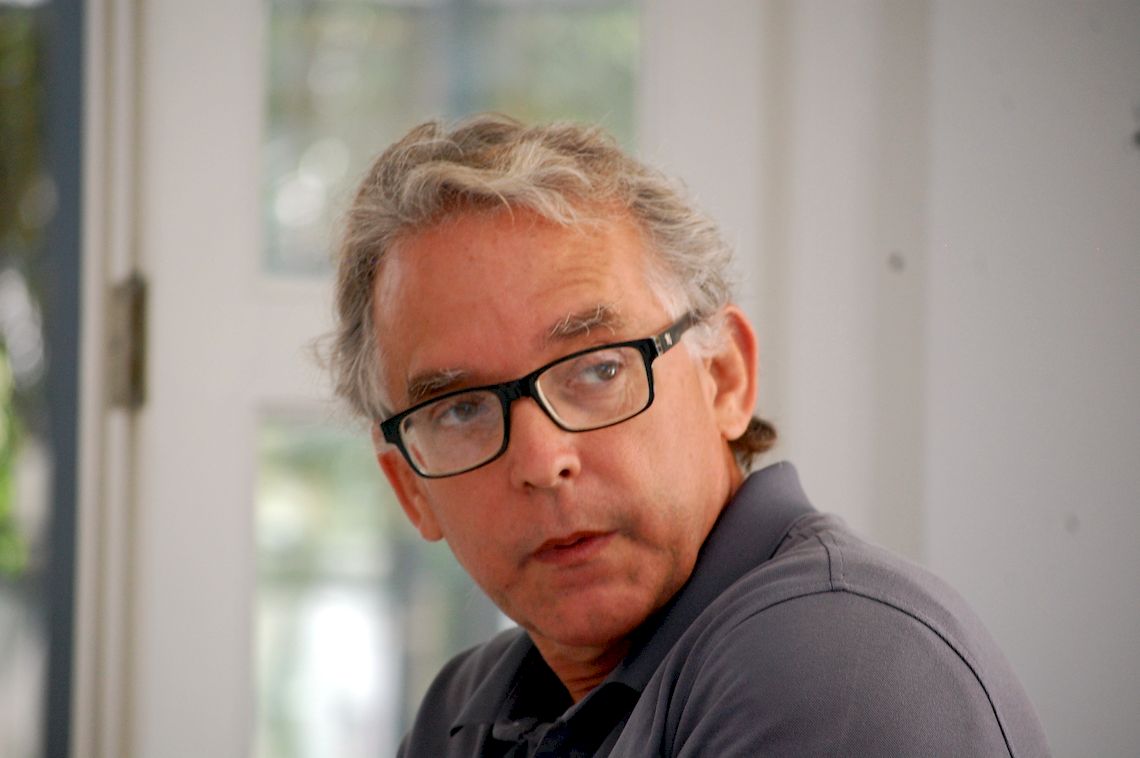
Do you estimate that energy consumption in Cuba will continue to multiply as this capitalist economy continues to expand?
Of course. Family economies are looking for solutions to keep going. They’ll try everything because their survival is at stake. So consumption will continue to grow, despite all the problems and adverse situations. And in fact, the government requires that this growth be accompanied by significant energy contributions. Otherwise, the business is unviable. Either because you’re forced to by law, or because of circumstances (blackouts).
And how are your relations with the authorities?
They flow, amidst what is normal in Cuba: bureaucracy, logistical difficulties, payments for our services, which must be deposited abroad. Otherwise, it’s impossible to invoice.
In a way, a financial corralito operates…
Currently, no company operating here, no company, unless it operates in the national currency and has a well-established financial cycle, can deposit money here, because you need to pay the supplier, withdraw money in a commercial transaction, and here you can’t withdraw it from the banks to pay abroad. You can only use it internally. So in 99% of cases, you have to have money to pay abroad: suppliers, consumption, materials, freight, everything… But also, there may be a company that provides you with a service here and then asks you to pay them abroad. So, how do you do it?
And is the tax rate very high?
It’s not that high. But well, you always feel it. First of all, because Captura is just starting to build something, and the beginning is always difficult, you don’t have all the resources. But if you wait until you have them all, you don’t do anything.
As you grow, you build what you need. And it’s not easy; if it were, everyone would do it. It’s not easy to start a business, to be in a market, and to compete. Sometimes, the easiest thing is that there are so many people doing it wrong that if you do it right, you can dominate the market.
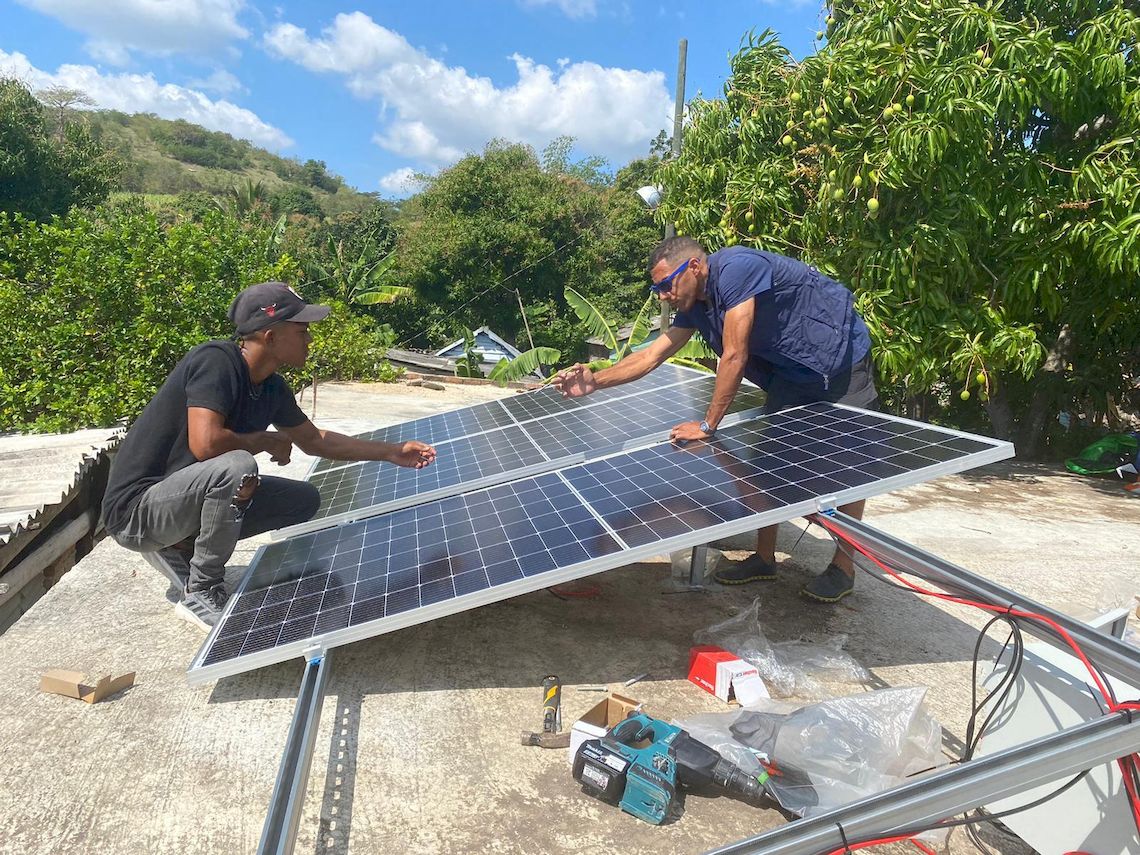
A booming market and an uncertain future
In Havana, solar energy is concentrated in service businesses, while in the provinces, where blackouts can last more than 20 hours a day, farmers are turning to solar systems to ensure irrigation and other basic services.
The boom is no coincidence. Cuba’s electricity system, dependent on obsolete thermoelectric plants and affected by the lack of foreign currency, requires multimillion-dollar investments that the country cannot afford in its current state. According to industry experts, the commitment to solar energy is not a passing fad, but a structural necessity.
The government, aware of the urgency, has launched, with Chinese support, an ambitious plan to build 100 solar parks by 2031, with an installed capacity of 2,000 megawatts. However, solar energy currently represents less than 10% of the national energy mix.
Meanwhile, the precariousness of the National Electric Power System (SEN) has had a devastating economic impact. Foreign companies, MSMEs, and self-employed workers have suffered losses due to the interruption of essential services such as cold storage, servers, and digital payments, among others.
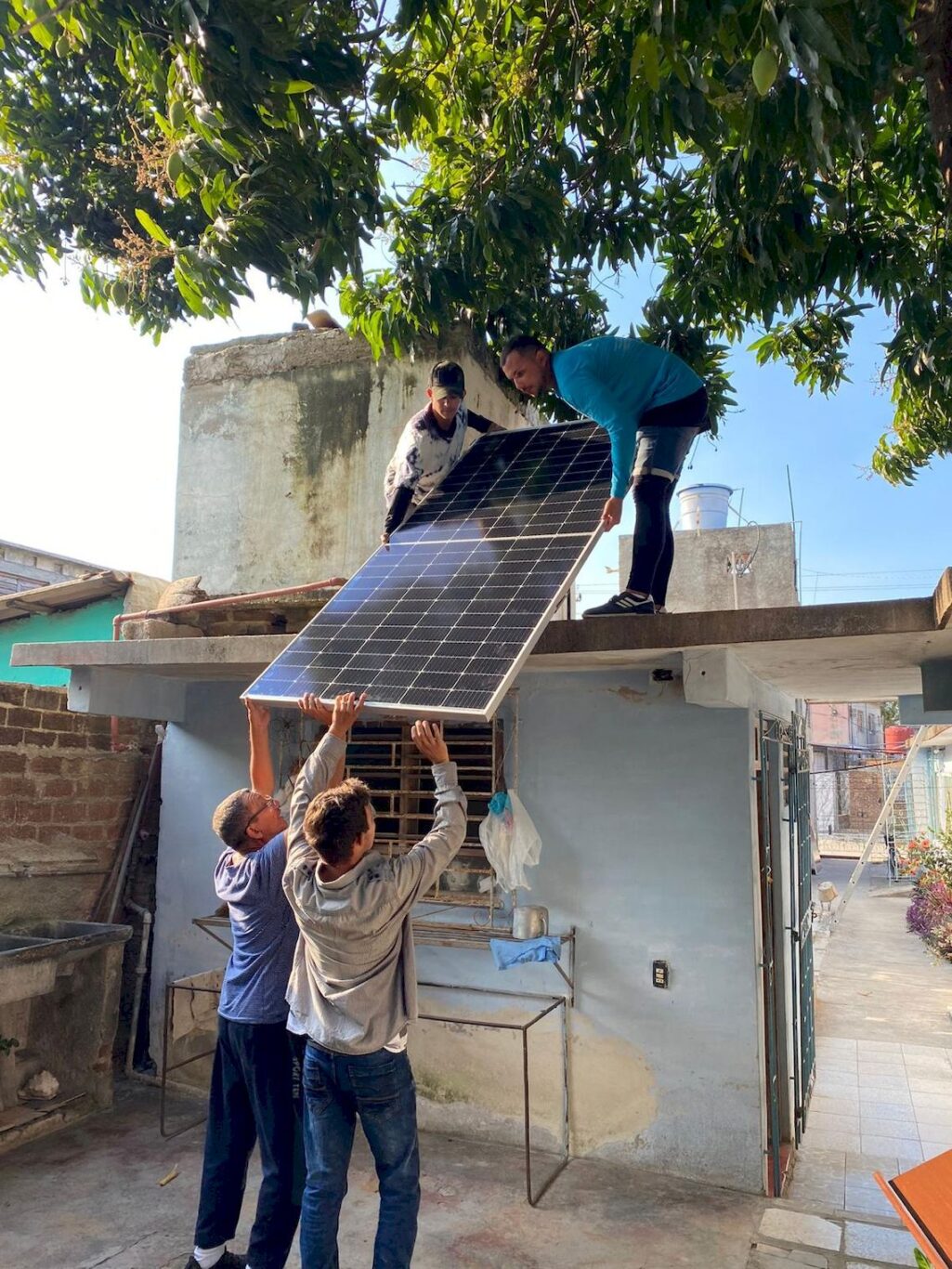
Tailor-made solutions
The private sector’s response has been swift. Companies like Captura offer turnkey solar systems, from small 1 kW kits for homes to 20 kW installations for businesses, with lithium or GEL batteries and hybrid options that allow energy to be sold to the public grid.
The prices of these systems range from $1,550 to $18,500, depending on the capacity and type of battery, figures that reflect both technological sophistication and market urgency. With “hybrid” systems, electricity can also be sold to the public grid.
In addition, products such as solar pumps, high-efficiency LED lights, and solar backpacks for charging mobile devices, costing $34, expand Captura’s range of solutions for a population desperately seeking energy autonomy in the face of declining or nonexistent public service.
Amid the crisis, social entrepreneurship has become a driving force of hope and access to environmentally friendly technologies. New MSMEs are emerging intending to provide decent employment to young Cubans and replicate sustainable business models. One of them is Renova, in the province of Camagüey, also dedicated to solar panels and connected to Chinese suppliers.
Captura’s recent success in winning the bid against six competitors to supply solar energy to the Norwegian Embassy in Havana — replacing diesel generators with 162 solar panels and 17 lithium batteries — is an example of the transformative potential of this industry.
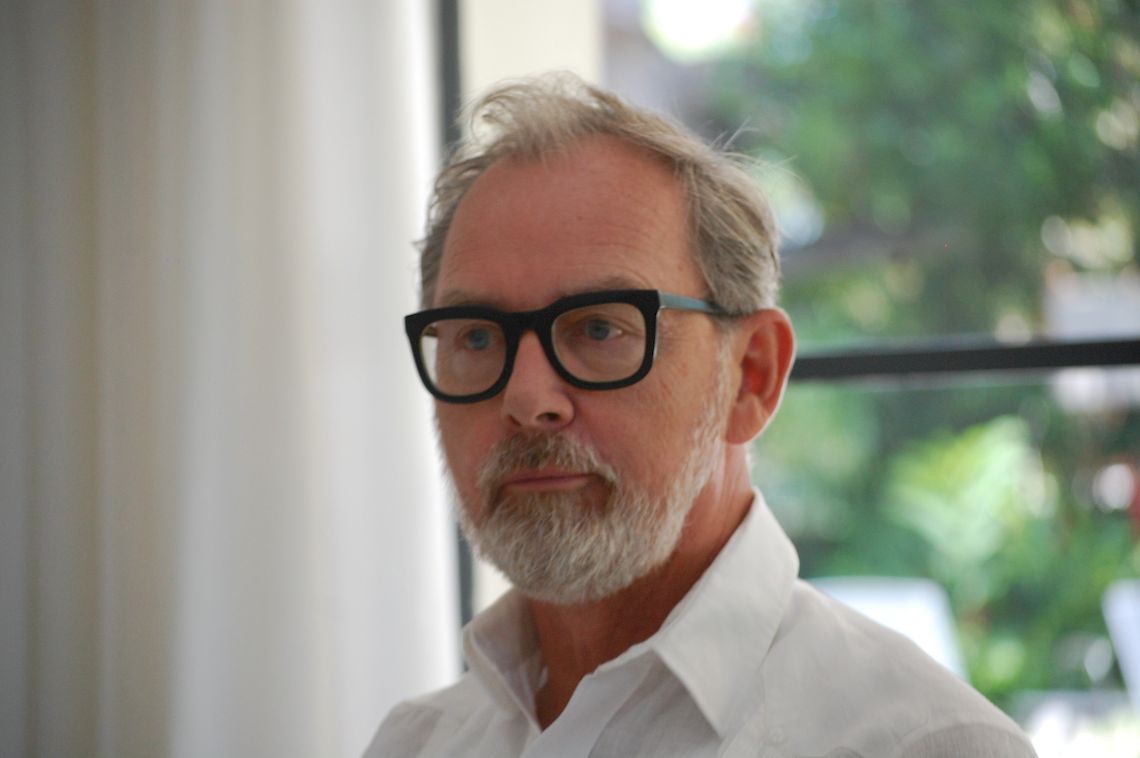
However, the path is not without challenges and depressing statistics. The Cuban economy contracted by 1.9% in 2023. It reportedly didn’t grow last year, and the growth prospects for this year are nil, although official figures for 1% were predicted at the beginning of 2025.
Social discontent is resulting in a record migratory exodus (between 2021 and April 2024, more than 1.79 million Cubans left the country) and increasingly frequent protests in the face of an unstoppable decline in social indicators. At the same time, crime and drug use are also on the rise.
Kjell, the Nordic friend
Norwegian businessman and religious leader Kjell Ove Hatlem is well known to Cubans. He has led and coordinated various humanitarian aid projects on the island between 2021 and 2023, including the shipment of medicines, medical supplies, food, and hygiene items.
With a track record dating back to 2013, working with Cuban church organizations to foster job and income creation through small-scale sustainable businesses, Hatlem has closely followed the Cuban situation since his first trip in 2005, recently making between four and eight visits a year, except during the pandemic.
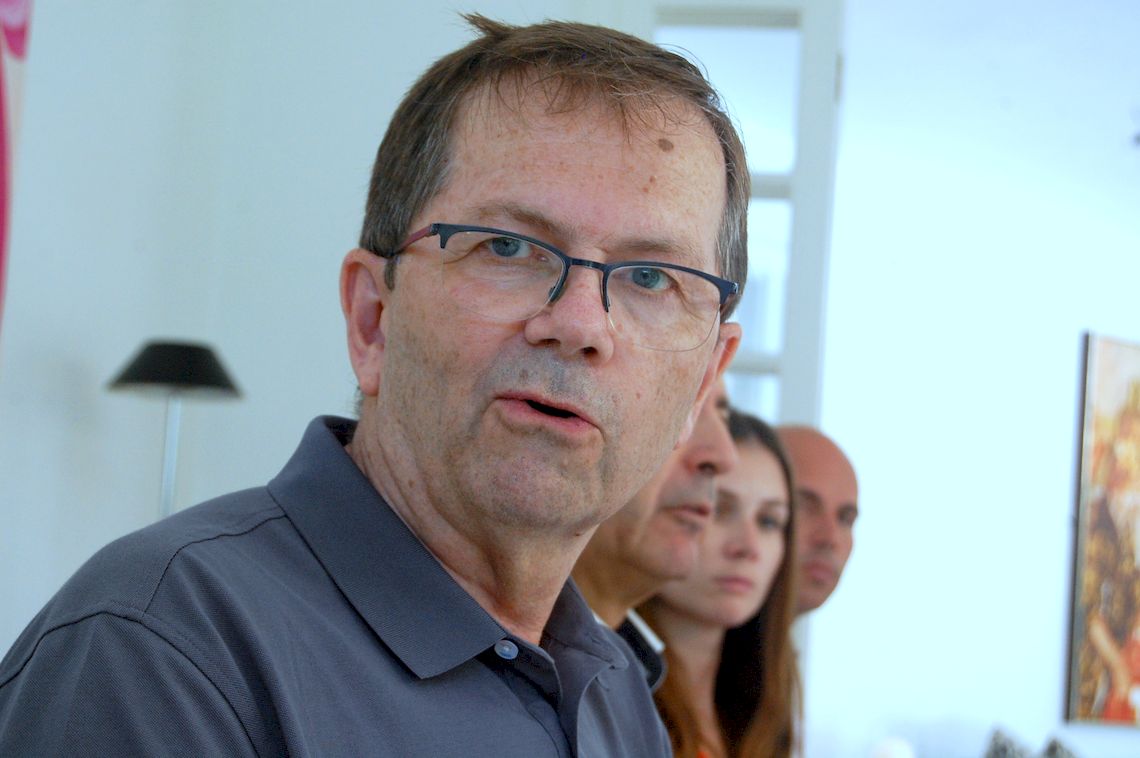
In September 2024, he traveled to Havana to participate as a businessman in the 3rd International Renewable Energy Fair, held at Pabexpo with 41 exhibiting companies representing 17 countries, including Spain, Germany, Canada, China, Italy, the Netherlands, Russia, and Mexico, among others.
In conversation with OnCuba, Hatlem explained that they prefer to use the term “social understanding” rather than “solidarity economy,” a practice primarily linked to the cooperative movement that emerged in the 18th century as a response to the ruthless social and economic conditions generated by the Industrial Revolution.
“We try to help new, established companies, but without seeking huge profits for ourselves and taking on a lot of risk, as we do in Norway,” said Hatlem, who also specified that they have 24 partners who have invested in Captura Aid and Trade to support young Cubans like Carlos and their families.
“We create the company and the entire necessary structure, and when the logistics of merchandise and payments work well, we invite more people to join our network,” he added with his usual relaxed demeanor and cautious loquacity in Spanish.
The viability of expanding photovoltaic energy in Cuba is questioned due to high maintenance costs. Is this really the case?
No, it isn’t. If you buy quality products, the maintenance costs are very low. For example, we offer products with a 30-year warranty, batteries with three or five years if they are gel or lithium, and inverters with three years. The problem arises when low-quality products are installed, which can fail after four or five years. It is essential to focus on quality.
Are there problems in the Cuban market with the quality of solar panels?
Yes, low-quality panels often enter the country. Sellers abroad may warn of this, but here they sell them as if they were top-quality. This creates problems because the panels don’t last long and have to be replaced prematurely.
We always try to sell at prices that are as affordable as possible. It’s very sad what’s happening in Cuba right now: solar panels are sold at a surcharge ($200 or $250) per panel, and then inverters and batteries are sold that often don’t work with the panels because they aren’t compatible.
Our packages come complete from the Bluesun factory in China and are designed and configured to work as a system. So, when customers buy from us, they pay $100 for each panel, which is of superior quality.
Given your frequent travel to the island, how do you perceive the evolution of electricity consumption in recent years?
Consumption has tripled, mainly due to tourism and the opening of many businesses that didn’t exist before. Tourists demand air conditioning, which increases demand. The country has no way of responding.
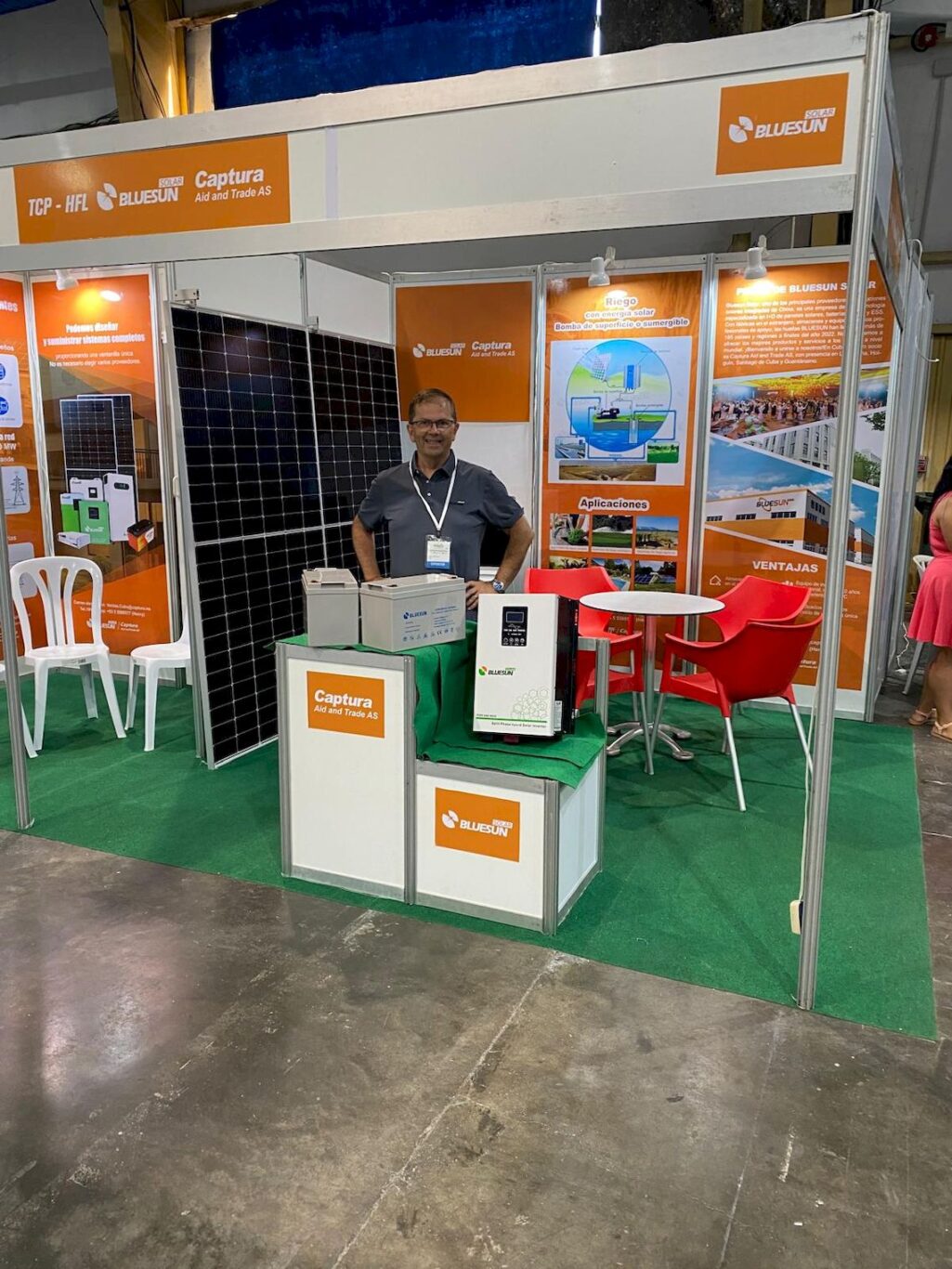
How would you characterize relations with the Cuban authorities for operating in the country?
They are very good. We have a permit from the Ministry of Foreign Trade and are working with Mexico to have a 100% foreign-owned company. Although there are normal bureaucratic issues, we have made good progress so far.
What is the estimated time to recover the investment and achieve profitability?
We are at the beginning, so it’s too early to say. The important thing is to create jobs and have profitable prices to be able to maintain activity, even paying decent wages.
How does the Cuban salary and social situation affect your project?
It is difficult for Cubans, even for good professionals, to live on such low wages. Some earn just $15 a month. We must have ethics and think about building a country where everyone can have a decent wage and access to basic products.
Do you think Captura Aid and Trade can contribute to improving the country’s structural crisis?
We are small, but we can help with structural aspects, such as facilitating access to packaging for small producers. We will also help more people produce and sell quality products.
How do you see Captura’s future in five years?
We hope to have grown, consolidated logistics and helped more Cubans create and maintain their businesses. If we join efforts, we can have a significant impact on the country.
My question may be a boutade, but could Cuba reach a point like Australia, where residential solar generation contributes nearly 15% of the continent’s electricity consumption?
Perhaps by 2050, but currently, the shortage of electricity production in Cuba is enormous. The government has plans to build many solar parks, but they need about $2 billion to reach the necessary level, and there is no funding for that. They have received some donations from China, but production is less than half of consumption.
An architect who builds fictions
Fernando Martirena (Santa Clara, 1992) is a Cuban architect who graduated in 2016 from the Technological University of Havana (CUJAE), where he was also a professor of Theory and Criticism. He is the co-founder and one of the core members of the architecture studio Infraestudio, founded in Havana in 2016 with Anadis González and David Medina.
His inaugural project, the Centro de Arte on Línea Street, a monumental restoration of a 19th-century mansion in Vedado, took nine years to complete and marked the consolidation of his design philosophy, based on the creation of ideas and strategies of adaptability and resilience rather than traditional material production.
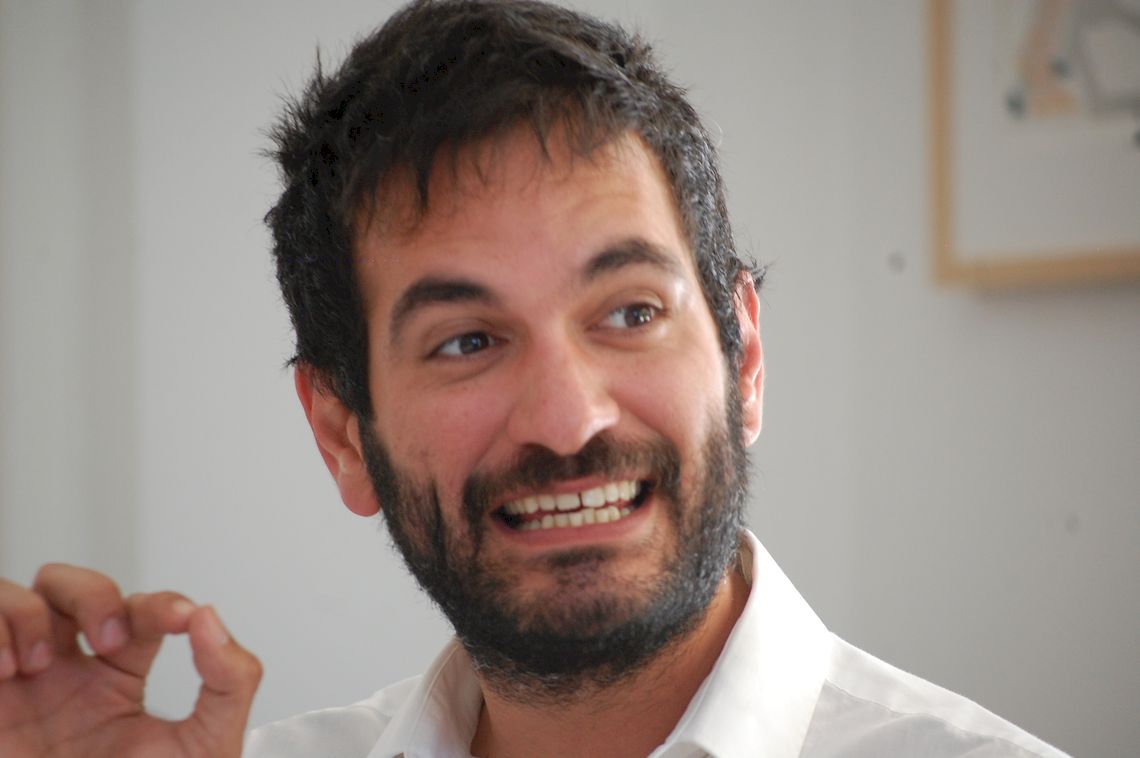
Fernando, you mentioned something intriguing about the potential class divide that private electrification through residential solar panels could generate in Cuba. How many people or what sectors of Cuba would be left behind if that happens?
Well, I haven’t talked about classism. I think Cubans accomplish their goals very differently. Energy savings and grid connection will happen legally or illegally. Classism regarding who has luxuries has been evident for a long time.
The forced sustainability imposed by the lack of electricity, the harvesting of rainwater and the use of cisterns, or the issue of electricity with ecoflows and solar panels, are forced and necessary. They don’t stem from a global ecological awareness, but rather from addressing a very specific situation in Cuba. People will look for ways to solve the problem: some will buy the Norwegian system and others will use a car battery.
This is compounded by a society that moves at various levels and speeds, in modes and ways of collecting resources for life. How could an initiative like yours, Infraestudio, have any real gesture of solidarity?
Only in fiction. Only in discourse, in propaganda for sustainability. Not in real life, because we work on a micro-scale based on the private sector. Until we become a social force and the architect becomes an influential figure, it will be merely fictional, not real.
So, for you, solidarity-based sustainability is just a fiction that isn’t capable of generating realistic expectations?
Yes. For me, fiction is enough. In this country, I’ve been moved by fiction. Many countries and religions do the same. Fictions are sometimes enough; the important thing is to communicate them and for them to reach many people. The problem isn’t the power of fiction, but its ability to reach. Sustainability isn’t an agenda for the Cuban people, but now it’s becoming one, even if it’s forced. That doesn’t make it worse, just different.
Can architecture play a role in addressing people’s energy needs? Is there a specific architecture for that, or is it just adaptation?
So-called green architecture is very commercial and has a chromatic relationship with the dollar (laughs). Good architecture for that is colonial, Roman, and modern.
The 1950s in Havana were a world example of how to deal with the climate. The Cuban modern movement is perfect for that. Now, the issue of electricity isn’t solved by architects. We can promote it, but it depends on the market lowering prices and making it popular. Now, only a tiny fraction of the population can afford solar panels, but if more people buy, prices will drop, as happened with beer.
You also mentioned the urban landscape, with refrigeration, air conditioning, and water tanks. Does this disfigure or make the habitat ugly?
I never talk about ugly or pretty, because I think Havana is very beautiful despite everything; even ugly things can be beautiful. The first step is to solve the problem individually. The second is to unite as a group and move from the microscale to a larger scale, where buildings have centralized air conditioning systems, tanks for the entire building, and collective solar panels. This will reduce CO2 emissions and organize the city, but it’s a second stage, one that hasn’t yet happened.
Is our city’s carbon footprint considerable?
Of course. Havana has a lot of air conditioners and water. The water produced by air conditioners, if collected, would be useful for many things, but it’s lost through a network and expires. More than 50% of the water is lost.
Is it possible to make better use of resources, even in the midst of this unstoppable decline?
Of course! In situations like Cuba’s, sustainability is sometimes achieved more quickly. The crisis can be a shortcut to sustainability and a filter against technological classism, precisely because of the scarcity of resources.
Does change depend only on politicians or also on communicators and other social actors?
It depends on everyone: politicians, communicators, influencers, companies, actors… They all spread ideas, and that’s why I say fiction is important. Discourse is enough: having people talk about solar panels is more important than two or three large companies becoming sustainable. First the conversation, then the solution.
Does architecture have anything to say, to plan, or to apply in times of crisis? How does it survive the elements?
It’s a complex question. I believe architecture has never had anything to say; it is always the consequence of political or economic action. The architect responds to a commission, safeguarding other people’s interests. In cities like Medellín (Colombia) or Curitiba (Brazil), architecture seals the political contract and turns it into a visual product. Architecture comes at the end of the equation; it makes evident what was already happening before. It always arrives too late.
Is it never ahead?
An architectural project takes years to come to life. Architects don’t build buildings, they build fictions.







